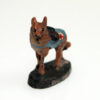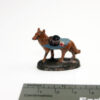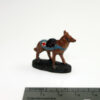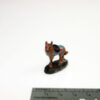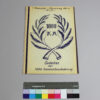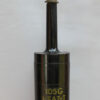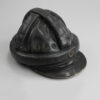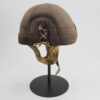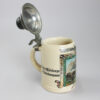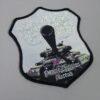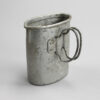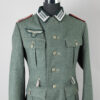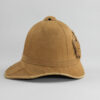Elastolin figure ambulance dog
Inventory number: DPM 7.36.4
Animals have always accompanied people to war. One of the most loyal companions in civilian life was and is also a helper in war for many soldiers. Dogs were used for guard duty, for transportation, for delivering messages and for detecting people and mines. The first systematic training of dogs for military service took place in Germany during the First World War, when ambulance dogs, for example, were trained. Their job was to locate injured soldiers in the confusing terrain of the trenches and guide medics to them. Medical dogs also carried dressing material in a bag on their backs, as can be seen on our object of the month.
This is a play figure from the company O & M Hausser, which used to be found in children’s rooms and is now in the hands of collectors. In contrast to lead figures, Elastolin figures were harmless to health, but also considerably more expensive. Until the 1950s, the figures were pressed into shape from a paste of sawdust, clay and glue, dried and painted by hand. The fact that this was done in a factory can be seen from the somewhat “grumpy” expression on the face of our ambulance dog: The figures were mass-produced for the children’s room.
Dogs were also mass-produced for use in the war. Many soldiers owed their lives to them and some of the four-legged friends became heroes. But many lost their lives. The Animals in War Memorial in the UK commemorates this with the inscription “They had no choice”.
You can find a historical article on the training of dogs during the war in the Frankfurter Allgemeine Zeitung from May 8, 1916.
Object of the month
(short) stories from the depot
Unfortunately, many objects cannot currently be shown in the exhibition for conservation reasons. Here you will find unusual objects and exciting stories of special pieces from the depot


